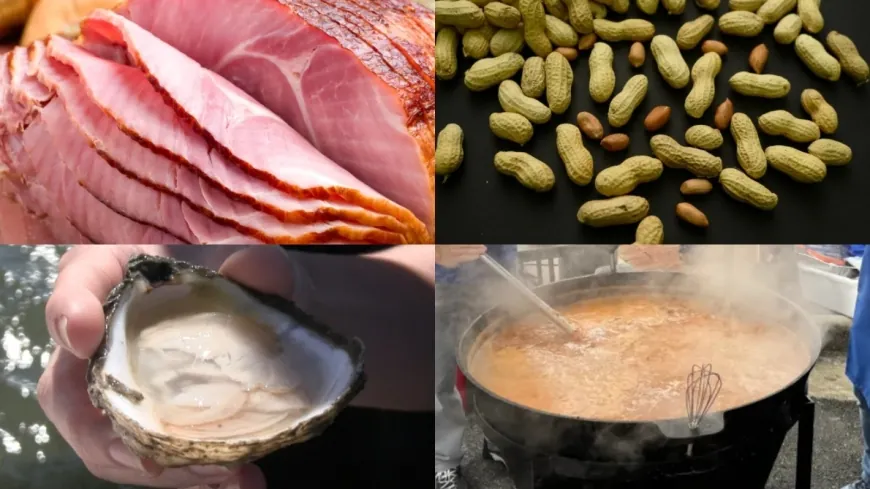LIST: Iconic Virginia foods and their origins

RICHMOND, Va. (WRIC) -- Virginia has an extensive history, including housing the first permanent English settlement, among other historical landmarks. But what about iconic foods that are interwoven within the fabric of the Commonwealth's history?
Brunswick stew

Volunteers stirring a pot of 'Uncle's Brunswick Stew' at a fundraising event held for Rob Drescher. (Photo: Kerri O'Brien)
Brunswick County is considered the home of Brunswick stew. A sign in the county created by the Virginia Department of Historic Resources says that according to local tradition, the recipe originated when Creed Haskins, a member of the House of Delegates, went on a hunting trip with friends in the county in 1828.
While on the trip, his camp cook, Jimmy Matthews supposedly hunted squirrels for a stew, simmering the meat with butter, onions, stale bread and seasonings, creating the dish. Recipes have changed over time, as folks swap squirrel for chicken and add vegetables, though the soup "remains thick and rich."
The sign adds that while other states have made similar claims, Virginia's is the first.
Oysters

Oyster (Photo: 8News)
According to the Virginia Museum of History and Culture, Indigenous communities relied on oysters, other fish and shellfish for sustenance before the arrival of English colonists in Virginia.
Once colonists arrived, the museum said oysters quickly became a staple of their diet since they were so abundant. At the time, they were cheaper than beef, so the choice was economical.
Eventually, pollution and overharvesting began to degrade the environment, and by the 1970s, Chesapeake oysters hit an all-time low. Since then, though, conservation work has resulted in the replenishment of oyster beds, and in 2016, 40 million were sold in the state, according to the museum.
Depending on where they are harvested along the shores along the Commonwealth, oysters may have different tastes, though they're all the same species, according to the Virginia Tourism Corporation.
Peanuts

(AP Photo/Patrick Sison, File)
Peanuts are not native to North America, and are believed to have come from somewhere in South America, according to the Virginia Tourism Corporation.
Traders began transporting the peanuts to Mexico, then to countries across Africa and Europe. After crossing the Atlantic Ocean, the corporation said the peanuts then crossed the ocean again alongside enslaved Africans and were brought to North America in the 1700s.
The peanuts were initially used for animal feed and viewed as more of a novelty than a staple, after which they continued to popularize, according to the corporation.
The corporation said the first commercial peanut crop was grown in 1842 in Sussex County, in a region with sandy, loamy soil suited for growing them.
Virginia's peanut production ranks 8th in the U.S., according to the Virginia Department of Agriculture and Consumer Services.
Ham

(Getty Images)
The origins of ham in the state can be traced back to colonial times in Jamestown over 400 years ago, according to the Virginia Tourism Corporation. Indigenous people taught settlers in there how to preserve meat by using smoke, salt and aging.
The town of Smithfield in Isle of Wight County is known as the ham capital of the world, and is one of the biggest localities for ham production. Virginia law requires that Smithfield hams can only be produced within the town's limits, according to the Virginia Museum of History and Culture.
Mallory Todd, who settled in Virginia in the late 1700s, started the first ham curing business in Smithfield.

 VENN
VENN 





